|
|
March 15th, 2015
I popped into Strandfontein Sewage Works on Saturday to try out a new pair of binoculars. I was quite surprised to see that the reed beds around pans P7, P6, P5 and a few others have been cleared. I’m sure there’s a good reason for this, and imagine they’ll regrow pretty quickly, but it made approaching some birds quite tricky. Pan P2 was the pick of the pans for the morning as it had both a good number of birds and a variety of species.

Zitting Cisticola
Strandfontein Sewage Works bird list for the morning: Karoo Prinia, Cape White-eye, Southern Double-collared Sunbird, Cape Canary, Hadeda Ibis, Hartlaub’s Gull, Kelp Gull, White-breasted Cormorant, Malachite Sunbird, Laughing Dove, Grey Heron, Cape Weaver, African Sacred Ibis, Black-shouldered Kite, Little Rush Warbler, Yellow-billed Duck, Blacksmith Lapwing, Cape Wagtail, Western Cattle Egret, Cape Teal, Little Grebe, Egyptian Goose, Pied Crow, Cape Shoveler, Brown-throated Martin, Greater Flamingo, Maccoa Duck, Red-knobbed Coot, Common Starling, Black-winged Stilt, Lesser Swamp Warbler, Glossy Ibis, Purple Gallinule, Common Moorhen, Swift Tern, Great White Pelican, Black-headed Heron, Cape Bulbul, Cape Turtle Dove, Helmeted Guineafowl, Grey-headed Gull, Caspian Tern, Common Ringed Plover, African Pipit, Curlew Sandpiper, African Spoonbill, Cape Sparrow, Cape Spurfowl, African Black Oystercatcher, Purple Heron, Little Stint, Barn Swallow, Pied Avocet, Red-billed Teal, Spur-winged Goose, Zitting Cisticola. [Total: 56 species]
David Winter
February 7th, 2013
I followed up recent reports of both a Black Tern and Pectoral Sandpiper from Strandfontein Sewage Works on Saturday afternoon. Black Tern is a scarce species in the Western Cape, but is likely somewhat overlooked, and Pectoral Sandpiper seems to be having a bumper season this year. I stand corrected, but in my view Pectoral Sandpiper was a rare vagrant 30 years ago, but more recently with the increase in regular records I’d say its status can be relegated to rare visitor.

Pectoral Sandpiper
I was pretty lucky with the Pectoral – it was the first bird I picked up when scanning the corner of P1 [map]. It shared the pan with Wood Sandpiper, Ruff and a Hottentot Teal.

Hottentot Teal
I wasn’t so lucky with the Black Tern. I scoured all of its reported hangouts, but turned up nothing. There were fantastic numbers of Swift, Common, Sandwich and Caspian Tern in P2, but no obvious “Lake Terns” were around. Given its relative small size it may well have been holed up in the large tern roost on P2. Anyway, I didn’t limit my visit to seeking out the two rare visitors and managed to notch up a respectable list for the afternoon – see list below. Here are a few random snaps from the trip.

Greenshank

Barn Swallow

African Pipit
David Winter
Strandfontein Sewage Works bird list for the afternoon:
Pied Crow, Kelp Gull, Speckled Pigeon, Common Fiscal, Common Buzzard, Great White Pelican, Swift Tern, Karoo Prinia, Southern Masked Weaver, Brimstone Canary, Hartlaub`s Gull, White-breasted Cormorant, African Marsh Harrier, Levaillant`s Cisticola, Ring-necked Dove, Cape Bulbul, Little Rush Warbler, Greater Flamingo, Cape Wagtail, Barn Swallow, Cape Teal, Maccoa Duck, Common Moorhen, Southern Red Bishop, Red-knobbed Coot, Brown-throated Martin, Pied Avocet, Glossy Ibis, Reed Cormorant, Common Starling, Hadeda Ibis, African Sacred Ibis, Blacksmith Lapwing, Yellow-billed Duck, Little Grebe, Black-headed Heron, Cape Shoveler, Grey Heron, Pied Avocet, Pectoral Sandpiper, Black-winged Stilt, Red-billed Teal, Hottentot Teal, Cape Longclaw, Bar-tailed Godwit, Sandwich Tern, Caspian Tern, African Black Oystercatcher, Egyptian Goose, Great Crested Grebe, African Pipit, Zitting Cisticola, Cape Robin-Chat, Western Cattle Egret, Spotted Thick-knee, African Fish Eagle, Spur-winged Goose, African Purple Swamphen, Ruff.
March 27th, 2011
I joined Mike, Brian and Thomas Buckham at Strandfontein on Sunday for a quick visit to the works. We were hoping to bump into the Sand Martin that had been reported the week before, but it was a needle in a haystack affair.
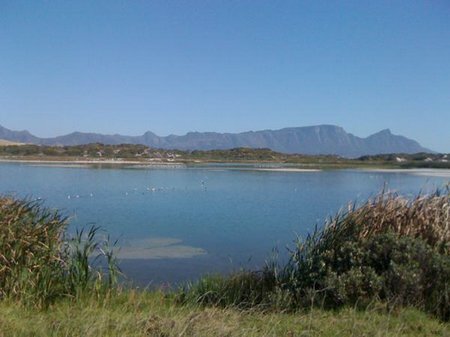
Soon after we arrived we bumped into Mel Tripp who pointed out a Water Mongoose in pan P2, a species I’ve only seen once before at Strandfontein (26 December 1991). The mongoose was completely relaxed by our presence, but what was most interesting was how the Sacred Ibis and Cattle Egrets in the pan reacted to it.
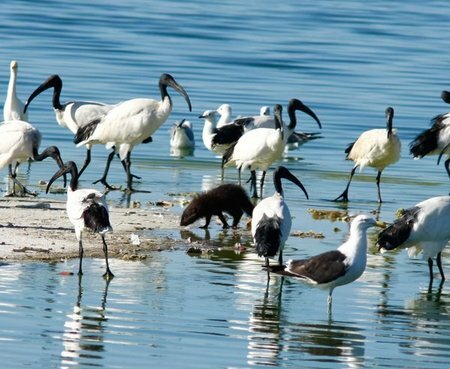
Water Mongoose surrounded by birds
Mel noted as he pointed it out to us that the ibis and egrets were following and herding the mongoose as it went about its business. Wherever the animal walked a group of birds would quite literally follow and track its movements.
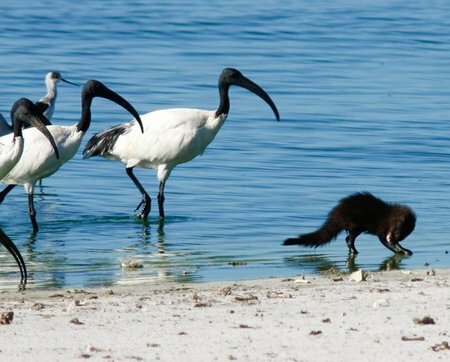
In the image above the mongoose was moving off only to be followed by a group of ibis. The mongoose seemed quite relaxed and at no point appeared threatened or put-off by its followers. We thought perhaps the birds were just keeping an eye on the mongoose as reference books indicate they eat birds eggs.
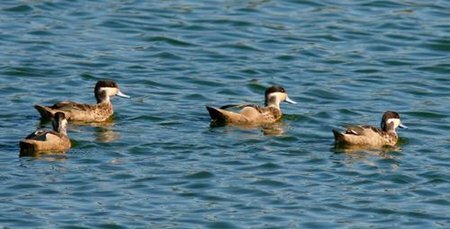
P2 was probably the most productive pan of the morning. It turned up a small group of Hottentot Teal and the exposed margins held lots of Little Stints, Common Ringed Plovers, a Greenshank and a single White-winged Black Tern.
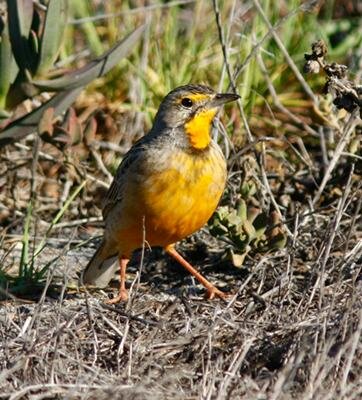
Cape Longclaw

African Sacred Ibis
Strandfontein Sewage Works bird list – 27 March 2011: Cattle Egret, Black-headed Heron, Common Starling, Red-winged Starling, Barn Swallow, Brown-throated Martin, Little Rush Warbler, Levaillant’s Cisticola, Cape Canary, Brimstone Canary, African Purple Swamphen, Common Moorhen, Pied Avocet, Black-winged Stilt, Red-eye Dove, Cape Turtle Dove, Hottentot Teal, Cape Teal, Cape Shovellor, Egyptian Goose, African Marsh Harrier, Black-shouldered Kite, Zitting Cisticola, Lesser Swamp Warbler, African Black Swift, Purple Heron, Cape White-eye, Pied Crow, Cape Cormorant, Reed Cormorant, Kelp Gull, Hartlaub’s Gull, White-necked Raven, Cape Robin-chat, White-winged Black Tern, Little Stint, Common Ringed Plover, Cape Wagtail, Common Greenshank, Black Sparrowhawk, Cape Bulbul, Little Grebe, Black-necked Grebe, Blacksmith Plover, Swift Tern, Sandwich Tern, Caspian Tern, Hadeda Ibis, Sacred Ibis, Glossy Ibis, Cape Weaver.
David Winter
September 12th, 2010

White-backed Duck
The highlight of my blitz around Strandfontein on Saturday was a pair of White-backed Duck on P1 [map]. They were close to the south bank. I can’t recall seeing White-backed Duck at Strandfontein before, has anyone else seen this pair?

Greater Flamingo
Water levels are high at the moment and bird numbers seemed a bit lower than average. There are however loads of Greater Flamingo around.

Karoo Scrub-Robin
I don’t always venture into the back pans of Strandfontein, but if one is trying to build a decent list you can add a variety of species such as Karoo Scrub-robin [pictured above], Cape Grassbird, Grey-backed Cisticola and African Reed Warbler in summer.
Strandfontein bird list: Cape Canary, Kelp Gull, Levaillant’s Cisticola, Cape White-eye, Karoo Prinia, Common Starling, Great White Pelican, Little Rush-Warbler, Lesser Swamp-Warbler, Southern Double-collared Sunbird, White-breasted Cormorant, Cape Bulbul, Little Grebe, Helmeted Guineafowl, Cape Turtle-Dove, Greater Flamingo, Cape Robin-chat, Glossy Ibis, Cape Teal, Southern Pochard, Red-billed Teal, Maccoa Duck, Black-necked Grebe, Cattle Egret, Sacred Ibis, Hartlaub’s Gull, Reed Cormorant, Pied Avocet, Red-knobbed Coot, Blacksmith Plover, Black-winged Stilt, Yellow-billed Duck, African Marsh Harrier, Common Moorhen, Speckled Pigeon, Cape Spurfowl, Little Swift, African Black Swift, Alpine Swift, Swift Tern, Hadeda Ibis, Purple Swamphen, Cape Wagtail, Common Waxbill, Grey-backed Cisticola, Karoo Scrub-robin, Yellow Bishop, Cape Grassbird, White-throated Swallow, African Black Oystercatcher, Grey Heron, Black-shouldered Kite, Brown-throated Martin, White-backed Duck x 2, African Pipit, Pied Crow, Black-headed Heron.
Mammals: Cape Grysbok, Small-grey Mongoose.
David Winter
August 31st, 2010
Recent reports on CapeBirdNet from Margaret Maciver et al prompted me to visit Philippi Wetlands on Sunday morning. I’ve visited the site before (see here for report and directions), but have never spent more than about 20 minutes in the area.

Looking at the above image it’s hard to believe that this area is a collection of dry fields in summer. It’s not apparent from the photo, but this pan is teeming with Greater Flamingo, Red-knobbed Coot, Little Grebe, Yellow-billed Duck, Red-billed Teal, Glossy and Hadeda Ibis and Little Egret at the moment.

A star attraction for Western Cape birders is the presence of White-faced and Fulvous Ducks, both uncommon species in this area. I counted at least 15 White-faced Duck, and a handful of Fulvous.

Spring is certainly in the air. These two Cape Canaries had a real stand-off as each one tried to out-perform the other. Each would shuffle up and down the line as it burst into song.

Cape Longclaw is always a treat. I watched this individual for at least 20 minutes as it picked its way through the grass toward my car. I’ve never appreciated quite how hard they work bobbing in and out of the thick grass and undergrowth looking for their next meal.

I was lucky to snap this African Pipit between one of its many display loops over the dry pan edges.

Not one of my best photos, but a record shot of Yellow-billed Egret. I haven’t seen this species around Cape Town for a few years, does anyone know of other reliable spots for them close to Cape Town?
Philippi Wetland Bird list: Sacred Ibis, Hartlaub’s Gull, Kelp Gull, Red-knobbed Coot, Red-billed Teal, Cape Shovellor, Grey Heron, Brown-throated Martin, White-throated Swallow, Little Egret, Cattle Egret, Cape Wagtail, Cape Canary, Greater Flamingo, Hadeda Ibis, Glossy Ibis, Yellow-billed Duck, Fulvous Duck, Egyptian Goose, Little Grebe, Cape Teal, Levaillant’s Cisticola, Speckled Pigeon, Common Moorhen, Reed Cormorant, Common Starling, White-faced Duck, Three-banded Plover, Lesser Swamp Warbler, African Pipit, Yellow-billed Egret, Pin-tailed Whydah, Cape Longclaw, Cape Sparrow, Pied Crow, Rock Kestrel, Barn Swallow.
David Winter
July 11th, 2010
The miserable weather meant I had Strandfontein to myself on Saturday. The light was very poor, but I did manage to snap a few shots and notch up a list just short of 60 species (detailed below); not a bad tally for the middle of winter. Three African Marsh Harriers were actively calling around P4 and this well-worn individual was confiding.

A nice surprise was this Klaas’s Cuckoo, a species that is regularly recorded in the Western Cape in winter, but is difficult to find when not vocal.

There were not a lot of waterfowl in the larger pans, but the smaller, sheltered ponds held good numbers of Red-billed Teal, Cape Teal and the odd Yellow-billed Duck.

The Spotted Eagle Owls were in their usual spot and tried hard to blend into their surroundings as I snapped this shot of them.

Little Grebe can be surprisingly difficult to photograph as they duck and dive away from you, but this individual was well behaved.

Strandfontein bird list: Indian House Crow, Common Starling, Cattle Egret, Hartlaub’s Gull, Kelp Gull, Greater Flamingo, Pied Crow, White-necked Raven, Sacred Ibis, Yellow-billed Duck, Cape Shovellor, Blacksmith Plover, Pied Avocet, Black-headed Heron, Levaillant’s Cisticola, Karoo Prinia, Black-winged Stilt, White-breasted Cormorant, Swift Tern, Cape Teal, Southern Boubou, Red-eyed Dove, Red-billed Teal, Cape Canary, Little Egret, Helmeted Guineafowl, Grey Heron, Little Grebe, Black-necked Grebe, African Fish Eagle, Brown-throated Martin, Lesser Swamp-Warbler, Little Rush-Warbler, Common Moorhen, Glossy Ibis, Cape Bulbul, African Marsh Harrier, Cape Robin-Chat, Common Waxbill, Purple Swamphen, Hadeda Ibis, Grey-backed Cisticola, Cape Francolin, Cape Grassbird, Southern Double-collared Sunbird, Cape White-eye, Klaas’s Cuckoo, Spur-winged Goose, Cape Wagtail, Reed Cormorant, Cape Weaver (breeding), Red-knobbed Coot, Spotted Eagle Owl, Cape Longclaw, Southern Pochard, Great White Pelican, Zitting Cisticola, Purple Heron.
David Winter
June 21st, 2010
Mike Buckham and I popped into Strandfontein yesterday for a few hours. The idea was to take advantage of the soft winter light with a bit of photography, but Mike was also hoping to catch up with Fulvous Whistling Duck for his Western Cape list. Water levels are high at the moment and nothing out of the ordinary was seen. Black-headed Heron is always so obliging, hence their inclusion with most Strandfontein reports… By the way, have you seen the video that Craig Banks shot of a Black-headed Heron catching a Cape Molerat in Hermanus – check it out here.
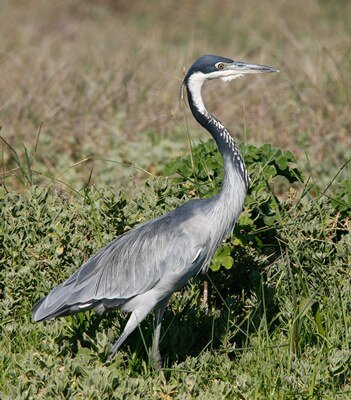
Black-headed Heron
Mike managed to snap this great image of a Greater Flamingo. This group was quite confiding for a change.
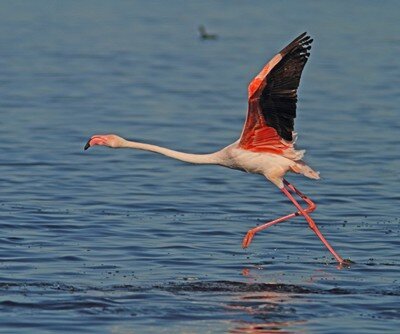
Greater Flamingo
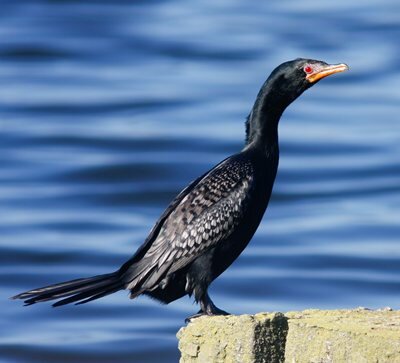
Reed Cormorant
On our way home we popped in at the Philippi Wetlands to see if we could rustle up a Fulvous Whistling Duck. Success! Not only did we see two of these beasts, but also a small group of White-faced Whistling Ducks. Here are a couple of record shots:
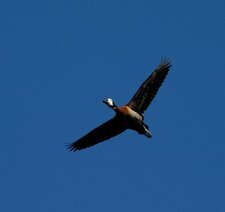 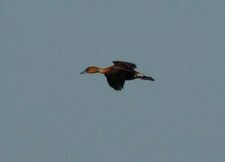
For those who don’t know where the Philippi Wetlands are here’s a map with general directions. Philippi isn’t exactly the safest area in Cape Town so don’t waive expensive equipment around and apply common sense.
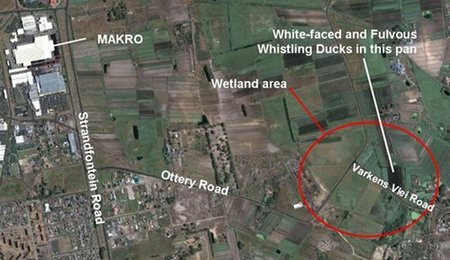
Technology really is amazing – below is an image from Google Map Streetview of the exact spot where we saw the birds:
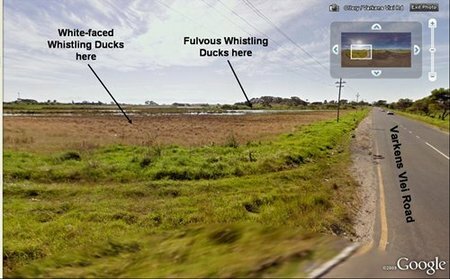
Enjoy.
David Winter
June 2nd, 2010
I’ve been car-less (self-inflicted) for the last few weeks, hence birding has taken a back seat, but I’m now up and running again so did a quick “whip-around” Strandfontein on the weekend. The highlight of the trip was of the “furred” variety, a Cape Grysbok on the northern end of S7.
 Cape Grysbok Cape Grysbok
I don’t recall having ever seen them so close to Cape Town, but that’s likely more a function of me not spending enough time in the right places. I imagine they must also occur at Kenilworth Race course, or perhaps this is too isolated an island? Apart from the record shot of the Grysbok, the following birds were also fairly obliging:
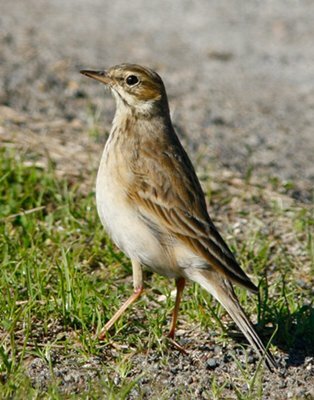
African Pipit
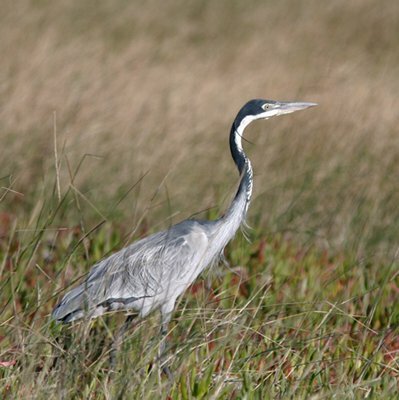
Black-headed Heron
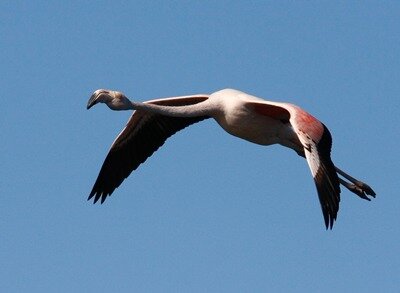
Greater Flamingo
David Winter
March 29th, 2010
Further to Otto Schmidt’s note on Friday about the immature Cape Gannet that was stuck in the mud at Strandfontein, he sent me some additional photos of a Ruff that was struggling with the same issue. Here is Otto’s photo and note below:
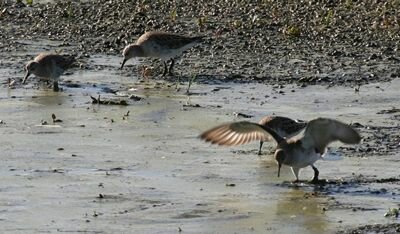
Further to my comments about the feeding waders along the same stretch of P2, I’m attaching a (not overly good) picture of a couple of feeding Ruff taken this Monday afternoon. You can see how they, particularly the front right-hand one, are battling with the sticky mud.
Thanks Otto.
David Winter
March 26th, 2010
Following the previous note submitted by Per Holmen last week about the immature Cape Gannet at Strandfontein Sewage Works, Otto Schmidt sent me the following photo and note:

Regarding the reported juvenile Cape Gannet in P2, there were in fact two birds there around lunch-time on 17 March, no doubt, as you suggest, taking a rest from the strong winds over the previous days. Both birds still seemed in reasonably good shape (see attached pic.), but their feet were stuck in the clinging mud of the pan, and one has since been reported dead. With luck the other one managed to free itself. I walked down to the pan edge, but couldn’t get anywhere near the bird without ending in a similar situation. There was no-one else around, but it would have been very difficult for anyone to get close enough to assist either bird. When watching waders feeding along the same edge this past Monday, even they were having to tug their legs out on occasion, so a gannet with its weight and webbed feet had very little chance.
Thanks Otto for this interesting photo and note.
David Winter
|
|







































Recent Comments